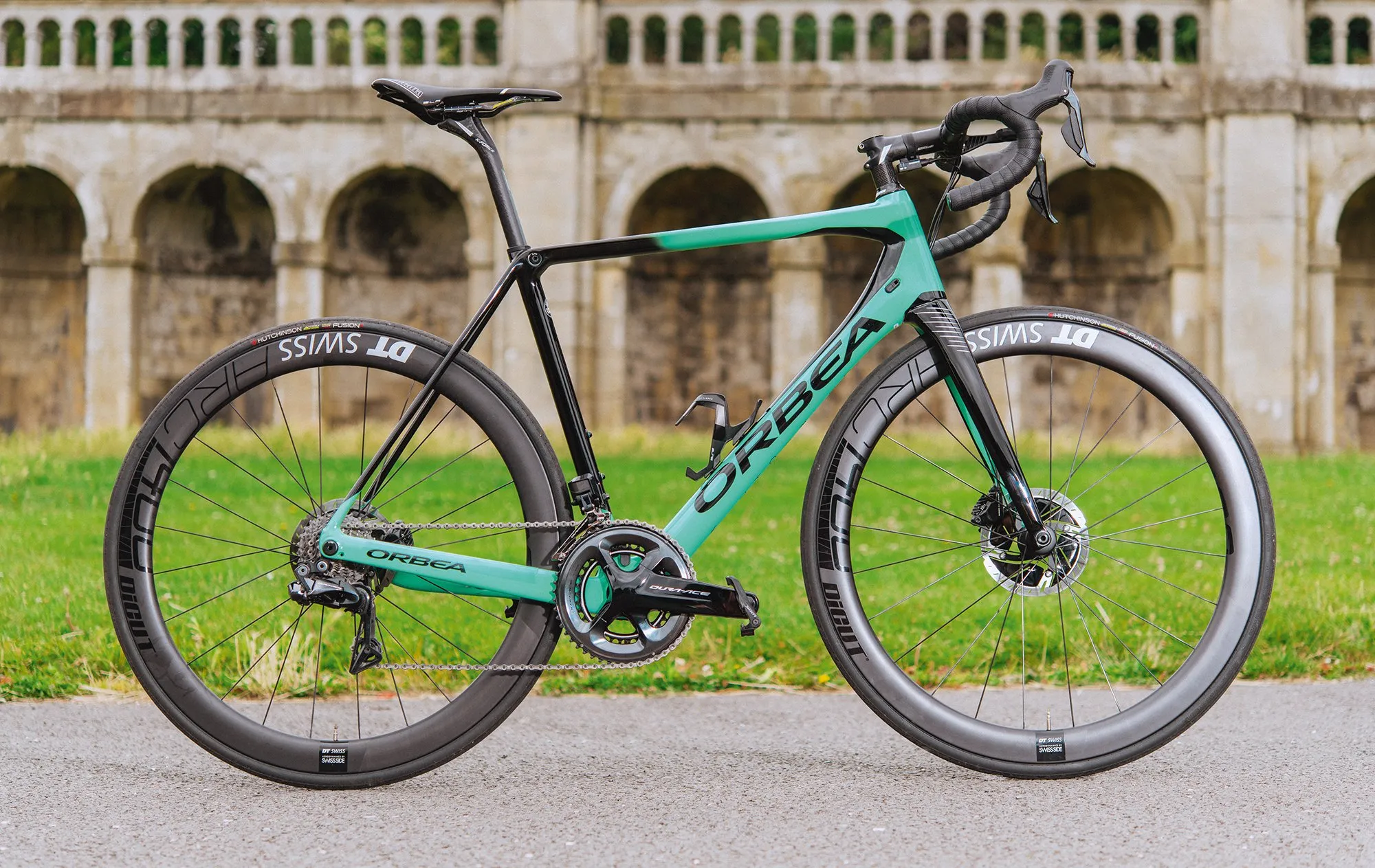The 2025 Orbea Orca M10i LTD PWR is positioned as a lightweight road bike for riders who care about performance on climbs and responsiveness on different terrains. Orbea built this model with a focus on reducing weight, improving aerodynamics, and increasing stiffness.
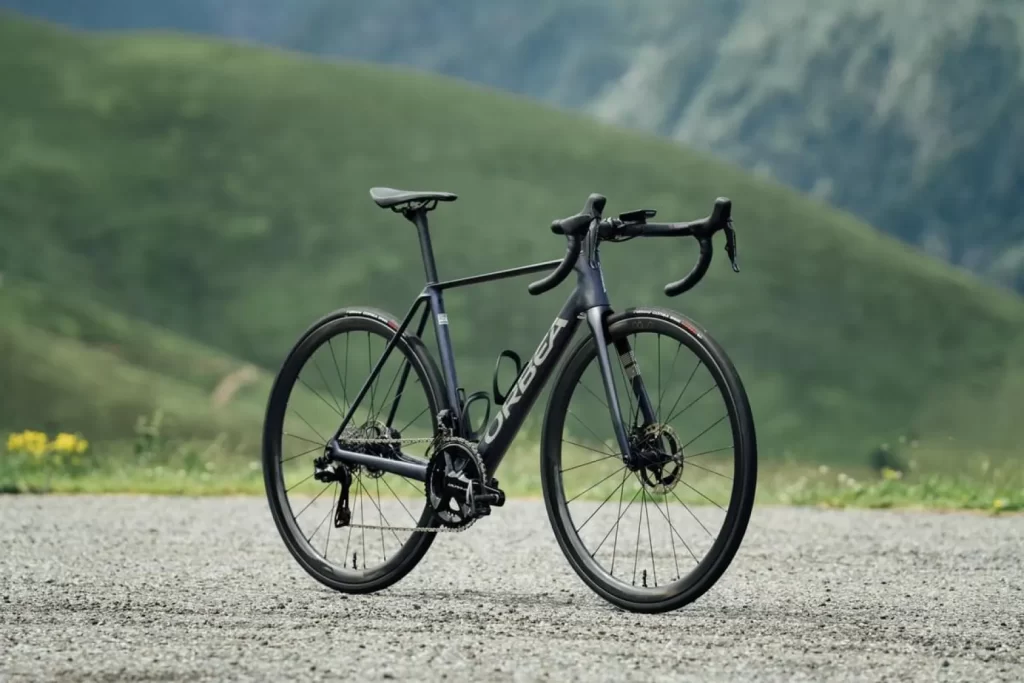
Contents
Frame and Geometry
The frame uses Orbea’s OMX carbon, which is their lightest carbon option.
It weighs around 750 grams for a medium-sized frame (size 53). This is very light compared to many modern road bikes.
The frame uses a monocoque construction. This means it is molded as a single piece instead of being made of multiple sections bonded together. Monocoque construction usually improves strength and stiffness.
The geometry is made for climbers. The head tube is relatively short, and the reach is long, which puts the rider in a forward, aerodynamic position.
The bottom bracket is relatively high, which helps when pedaling hard uphill.
The wheelbase is slightly short, which makes the bike turn quickly but also can make it feel nervous at very high speeds.
There are no extremely aggressive angles on the frame. Orbea seems to balance between race geometry and endurance comfort. It is not a pure endurance bike, but it is not the most aggressive racing bike either.
Cable routing is fully internal. All brake hoses and gear wires pass through the frame and handlebar system, making it look very clean.
The bike uses a 27.2 mm seatpost, which helps a little with vertical compliance (comfort over rough surfaces).
There is clearance for 32 mm tires, which is a modern touch. Riders can install slightly wider tires for extra comfort without sacrificing speed on most road surfaces.
The paint and finishing are of high quality, but this is cosmetic and does not affect performance.
Summary:
The frame is light, stiff, and cleanly designed for serious road riders. It favors climbers and performance-focused cyclists.
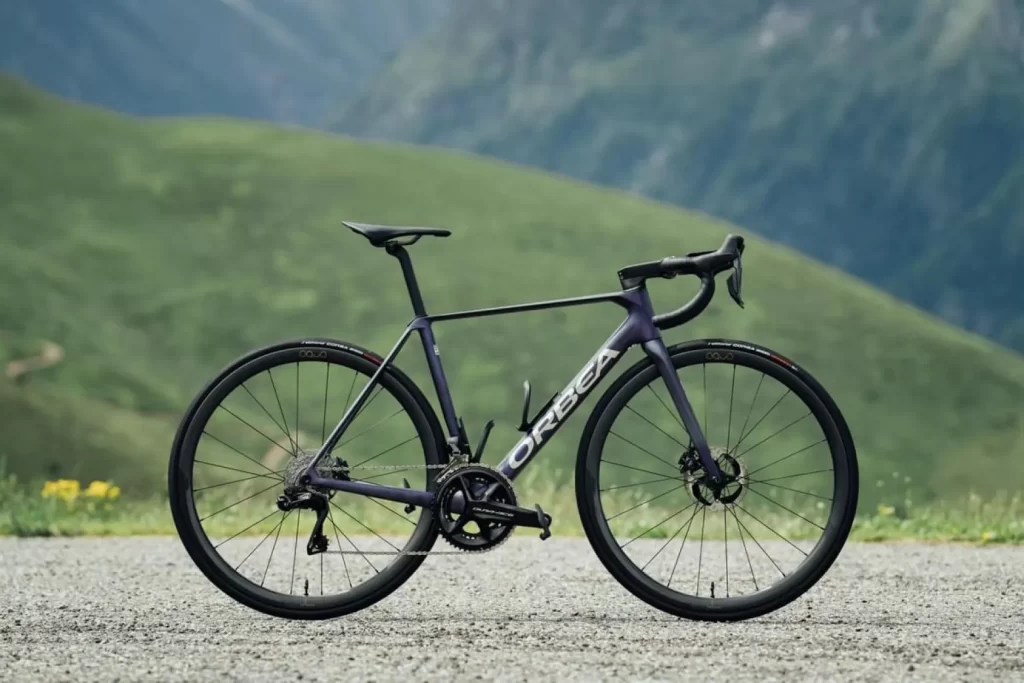
Drivetrain and Shifting
The Orbea Orca M10i LTD PWR uses the Shimano Dura-Ace Di2 9200 12-speed groupset.
This is the top-end road groupset from Shimano. Electronic shifting is extremely fast and precise.
The gear setup uses a 52/36T chainring combination and an 11-30T cassette.
This provides a wide gear range that covers steep climbs and fast flat sections. It is a middle ground between a pure climber’s bike and a sprinter’s bike.
Shimano’s Di2 system uses wireless shifting from the shifters to the derailleurs, with wired connections between battery and derailleurs for reliability.
Shifting under load (when pedaling hard) is smooth and consistent.
There is almost no noticeable delay between pushing a button and the derailleur moving.
The front derailleur works better under pressure compared to older generations.
The rear derailleur is compact and tucks neatly behind the cassette to reduce the chance of damage.
The bike comes with a Shimano Dura-Ace crankset equipped with a built-in power meter.
The power meter is accurate to within +/- 1.5%, which is standard for professional-grade meters.
Data is transmitted via Bluetooth and ANT+, making it compatible with most cycling computers and apps.
Summary:
Top-tier drivetrain offering fast, reliable shifting, combined with an integrated, high-quality power meter for data tracking.

Wheels and Tires
The bike uses Orbea’s own Oquo RP35 LTD carbon wheelset.
These wheels are 35 mm deep. This depth is shallow enough to stay lightweight for climbs but deep enough to offer minor aerodynamic benefits on flat roads.
The wheels use Sapim CX-Ray spokes and Zipp Cognition hubs.
Sapim CX-Ray spokes are among the lightest and strongest in the market.
Zipp Cognition hubs are known for their smooth rolling and low maintenance.
The tires are Vittoria Corsa Speed G2.0 TLR in 700x25c size.
These are tubeless-ready tires, which helps reduce rolling resistance and the chance of pinch flats.
The tires are optimized for speed, not durability. Puncture resistance is lower than heavier training tires, so riders should be prepared for a slightly higher risk of flats if riding on bad surfaces.
Rolling resistance is among the best in current road tires, making them a strong choice for racing and climbing.
Summary:
Lightweight wheels optimized for climbing and moderate aerodynamic gains, paired with ultra-fast but delicate tires.
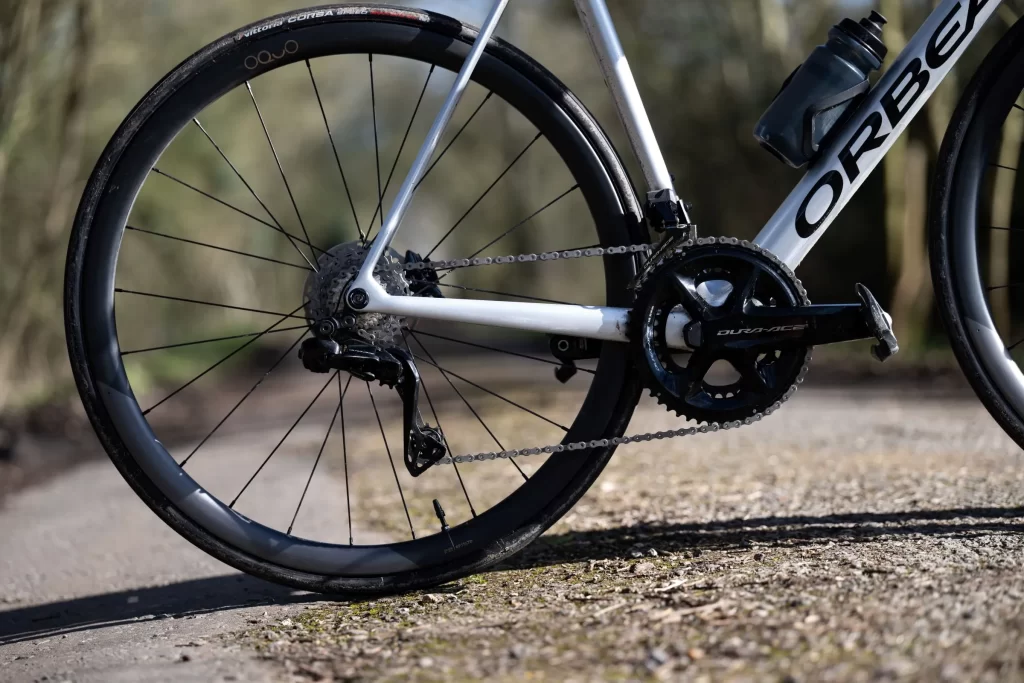
Braking System
The braking system uses Shimano Dura-Ace R9270 hydraulic disc brakes.
The front rotor is 160 mm, the rear rotor is 140 mm.
Stopping power is excellent. Modulation (the ability to finely control braking force) is smooth and predictable.
Under wet conditions, braking performance remains consistent, which is a major advantage over rim brakes.
Heat management is also better than older hydraulic models. Long descents at high speed do not noticeably degrade braking performance.
Brake lever ergonomics are good, and hand fatigue on long rides is minimal.
Summary:
Powerful, smooth hydraulic braking that performs well under all conditions, with excellent modulation.
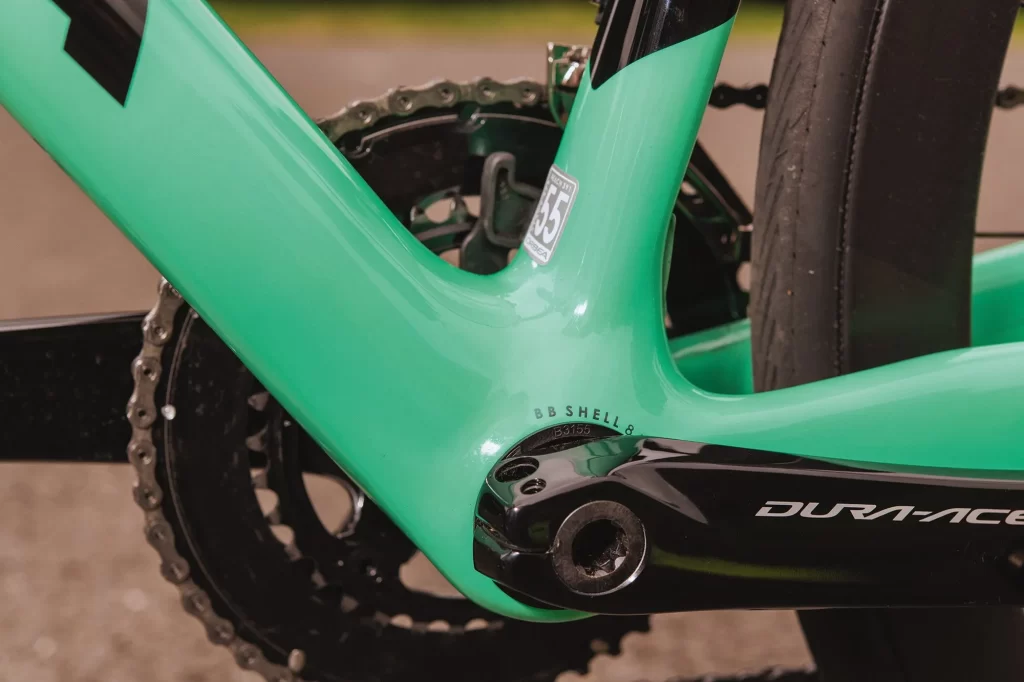
Cockpit and Ergonomics
The handlebars and stem are integrated using the Vision Metron 5D ACR EVO system.
This setup hides all the cables internally, improving aerodynamics and looks.
The shape of the bars provides a comfortable grip at the tops, hoods, and drops.
The bar width is typical: 40 cm for small frames, 42 cm for medium frames, and 44 cm for large frames.
The stem length is matched to the frame size for neutral handling. Most riders will find the setup comfortable after a short adjustment period.
The saddle is a Fizik Vento Antares R1, a racing saddle with minimal padding but a shape that supports aggressive riding positions.
The seatpost is carbon, helping to absorb small bumps from the road.
Summary:
Clean, integrated cockpit focused on aerodynamic performance and aggressive positioning, but still relatively comfortable.
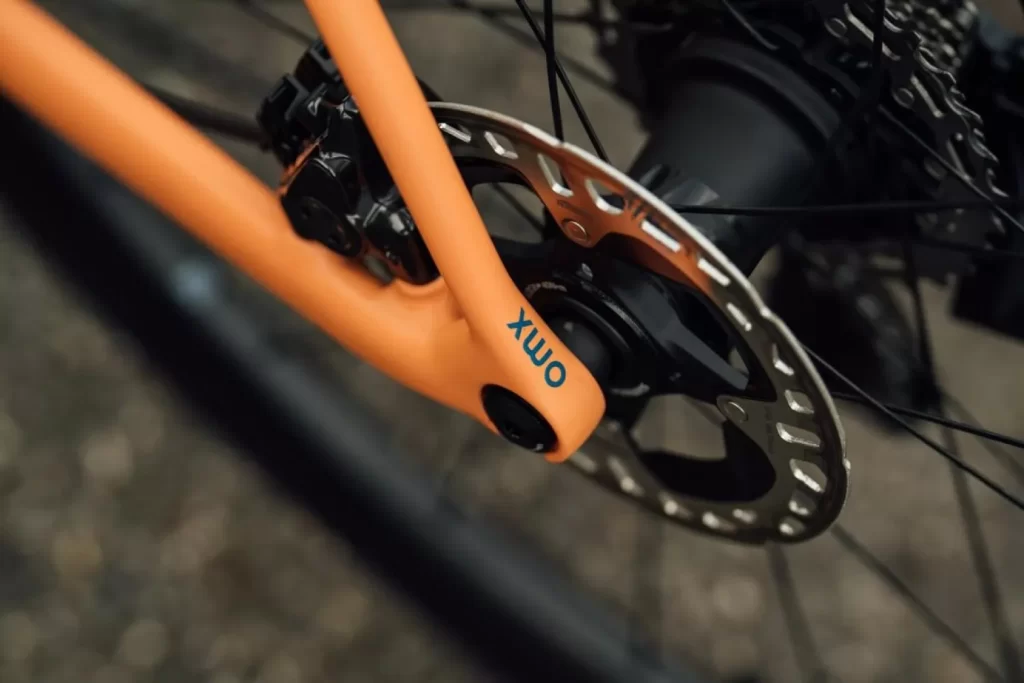
Ride Quality and Handling
The bike is very responsive.
Acceleration is immediate when you stand up and sprint.
Climbing feels efficient because the frame does not flex much under power.
Every watt you push seems to drive the bike forward without much loss.
Cornering is sharp and precise. However, the short wheelbase and tight steering angles mean the bike can feel twitchy for inexperienced riders.
On descents, the bike feels stable but demands good technique at very high speeds.
The vertical compliance is moderate. It is not harsh, but it is not as smooth as a pure endurance frame either.
Long rides are comfortable enough for trained cyclists but may feel stiff for beginners.
With 25 mm tires, the bike is quite firm. Switching to 28 mm tires would increase comfort with minimal speed loss.
Wind stability is good due to the moderate wheel depth.
The bike feels best at speeds above 25 km/h. Below that, it still rides well but does not feel as lively.
Summary:
Efficient, responsive, and stable at speed, but requires confident handling skills.
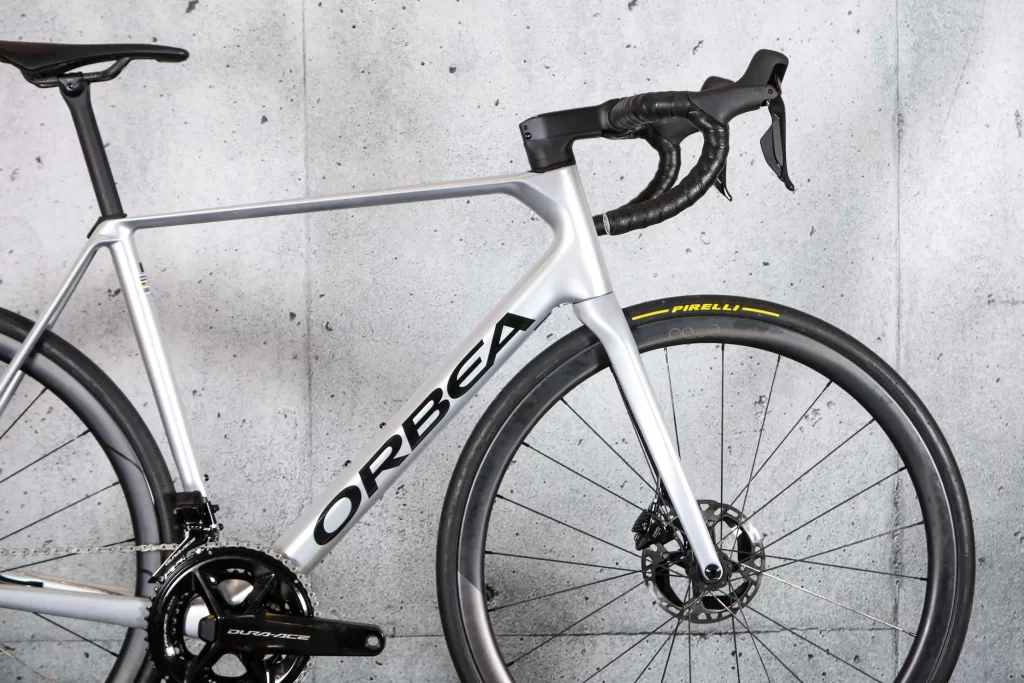
Maintenance and Durability
Internal cable routing makes maintenance harder than external systems.
Minor repairs and adjustments take longer because mechanics have to partially disassemble the front end to access the cables.
Electronic shifting requires less maintenance than mechanical shifting but needs battery monitoring and occasional firmware updates.
The carbon wheels are durable but must be checked regularly for damage after heavy use or crashes.
Hydraulic brakes require occasional bleeding to maintain peak performance.
The power meter needs battery replacement (usually every 200 hours of use) and occasional calibration.
The tires will need replacement sooner than heavier-duty models because they prioritize speed over puncture resistance.
Summary:
Low maintenance needs for the drivetrain but more complex frame and cockpit repairs compared to traditional bikes.
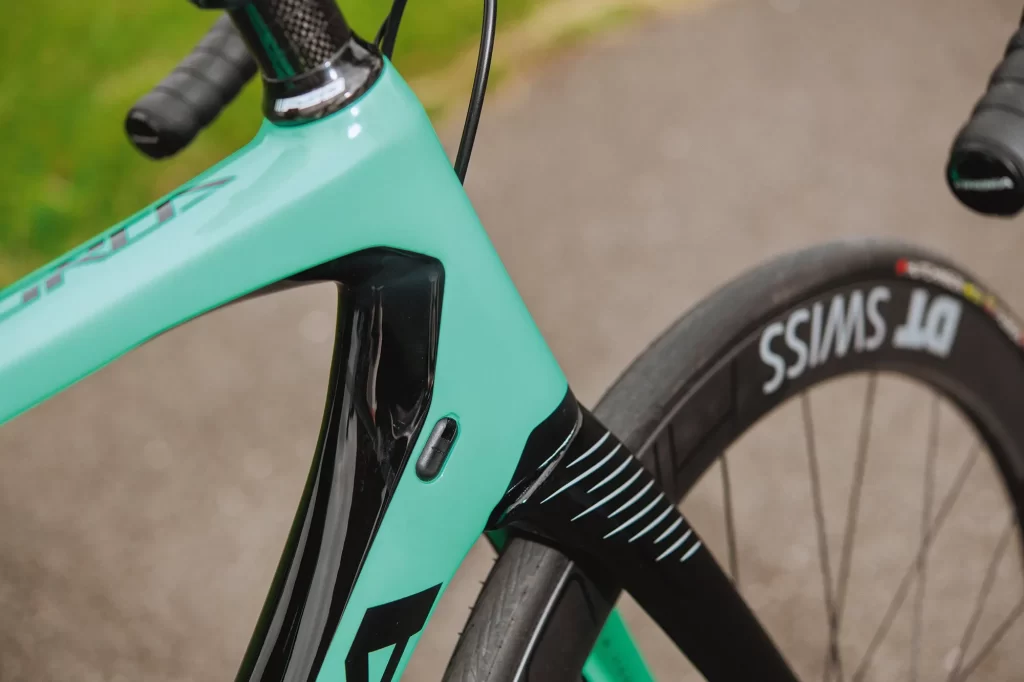
Weight
The complete bike, without pedals, weighs around 6.7 kg for a size 53 cm frame.
This weight is near the UCI limit for competition bikes (6.8 kg minimum).
The lightness is very noticeable during climbs and accelerations.
Adding heavier accessories like bottle cages, GPS mounts, and tools will increase total weight slightly but not significantly affect performance.
Summary:
Extremely light bike that enhances climbing and sprinting performance.
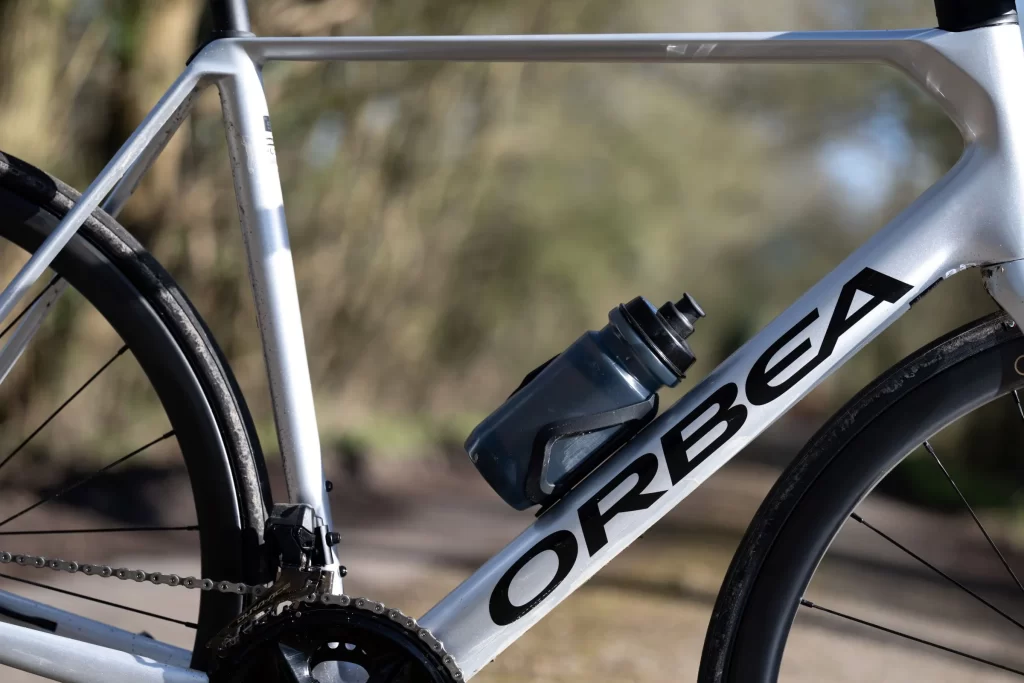
Pricing and Value
The Orbea Orca M10i LTD PWR retails for around $11,000 to $12,000, depending on region and taxes.
This price places it in the top tier of road bikes, alongside competitors like the Specialized S-Works Tarmac SL8, Trek Émonda SLR 9, and Cannondale SuperSix EVO Hi-Mod.
For the price, you get a high-end frame, full Dura-Ace Di2 with a power meter, carbon wheels, and professional-grade finishing.
Some other bikes in this price range offer lighter or more aerodynamic setups, but few provide a power meter included in the package.
Summary:
Very expensive but well-equipped; suitable for serious riders who prioritize performance and value integrated data tracking.
Competitors
- Specialized Tarmac SL8
Lighter, slightly more aerodynamic, but much more expensive with similar components. - Trek Émonda SLR 9
Similar climbing performance, slightly smoother ride, but no integrated power meter unless added separately. - Cervélo R5
Softer ride quality, better comfort, but heavier at the same price point. - Canyon Ultimate CFR
Cheaper with almost identical performance but less brand prestige and after-sales support.
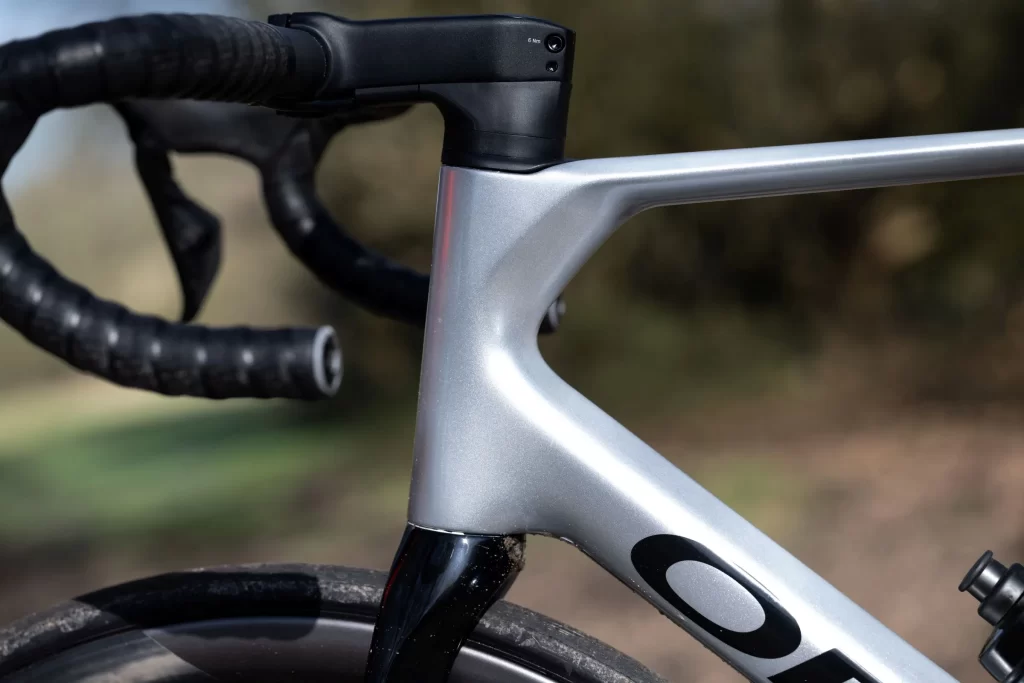
Conclusion
The 2025 Orbea Orca M10i LTD PWR is a lightweight, responsive road bike built for serious cyclists who care about climbing performance and precise handling.
It uses top-grade materials and components, including a high-end carbon frame, full Shimano Dura-Ace Di2 shifting, a built-in power meter, and lightweight carbon wheels.
The bike demands some riding skill, particularly at high speeds or technical descents. It is not designed for beginners or casual riders.
Maintenance is a little complex due to the integrated system but manageable for experienced owners or professional mechanics.
The price is very high, but it is competitive given the full equipment list.
Overall, the Orbea Orca M10i LTD PWR is a smart choice for competitive riders, serious enthusiasts, or anyone wanting a professional-level road machine built for speed and climbing excellence.
